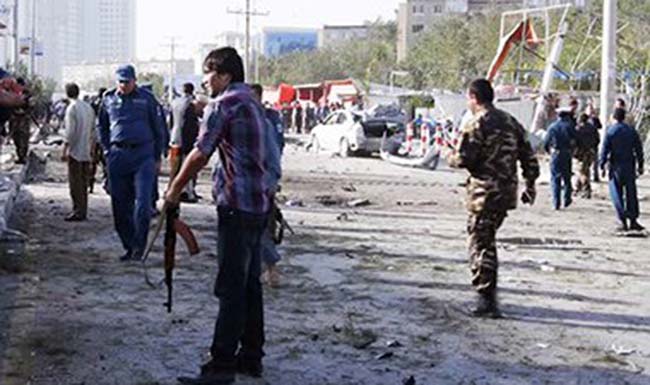The surge in militancy has resulted in heavy casualties and Afghan civilians are left at the mercy of serious violence and bloodshed. A spate of terrorist attacks carried out by the Taliban and self-proclaimed Islamic State of Iraq and the Levant (ISIL) led to indiscriminate killings. The escalated insurgency on the one hand and political wheeling and dealing on the other hand have filled the air with a sense of fear and disappointment and Afghans do not have peace of mind in their collective life – this demonstrates the fact that security goes from bad to worse.
Afghanistan has left a checkered past behind. The civil unrest, Taliban’s regime and the post-Taliban period are the significant milestones in our history. During the Taliban’s regime, people’s rights and liberty were trampled upon to a great extent. Life was highly cheap and the country was controlled at gunpoint. The Taliban fighters did not only ignore religious tenets and ethical code but also international law. They persisted only in their dogmatic ideology – which discriminated people on the grounds of their race, sex, color and creed. After all, articles of war and humanitarian law were never considered, therefore, women, children and war prisoners were killed in cold blood. Perhaps, anything was valuable but human rights and liberty.
However, following the 9/11, as the US launched “the war on terror” in Afghanistan to root out terrorism, a sense of hope filled the air and people wished to embrace democracy. The public believed that with the establishment of a democratic state, they would be able to exercise their rights and liberty. Therefore, they heaved a sigh of relief and hoped for the utopia, which was supposed to be void of violence and bloodshed. To put it succinctly, the downfall of the Taliban’s regime was deemed an end to the merciless death of Afghan men, women and children. So, people welcomed American forces with open arms for demolishing a cruel regime.
With the fall of the Taliban’s regime, Afghan representatives approved the Constitution on Jan. 03, 2004. The Constitution – which contained men’s dignity and their rights to life, liberty and property – was a landmark in our history. Moreover, presidential and parliamentary elections strengthened the democracy and brought greater hope for the public.
Since the Taliban’s ragtag militants sought sanctuary across the border, Afghan nation celebrated democracy and in their dream utopia. To their unmitigated chagrin, the peace and stability did not last long and the Taliban were reorganized and staged attacks against the Afghan and US forces. Similarly, Afghans’ utopian world changed into dystopia as their rights and liberty became susceptible to violence with the militants’ resurface. The instability compounded with the passage of time and challenged the “war on terror”. Afghan men, women and children again found themselves prone to terrorism and lost their lives in suicide attacks and improvised explosives devices (IED) every now and then.
Within the last two years, the security situation worsened and a large number of Afghan civilians lost their lives or were amputated as a result of the Taliban’s attacks. Based on the UN’s recent report, at least 1,601 civilian have been killed and 3,565 others wounded in the first half of the current year, showing a record surge of four percent compared to the same period in 2015. The total civilian casualty figures recorded between January 2009 and June 30, 2016 have risen to 22,941 deaths and 40,993 injuries, the recent attack which left dozens dead and hundreds wounded in Saturday’s demonstration in Kabul is not included in the report. According to UN Assistance Mission in Afghanistan (UNAMA), this year’s death toll included 1,509 children (388 dead and 1,121 wounded) – the highest numbers of children killed or wounded in a six-month period since 2009. Taliban and other anti-government outfits were blamed for at least 60 percent of the non-combatants’ casualties, Afghan forces for 22 percent and the NATO troops for 2 percent, however, 17 percent could not be attributed to any warring parties.
The UN’s High Commissioner for Human Rights, Zeid Ra’ad Al Hussein, demanded and end to violence against civilians in Afghanistan. He said that the warring parties had to put an end to the deliberate attacks on innocent civilians and the use of heavy weapons in densely populated areas.
The UN report and statements by the High Commissioner for Human Rights came just two days after the suicide attack, in a peaceful demonstration in Kabul, which left more than 300 dead and wounded behind – women and children were also among the casualties – for which the ISIL claimed responsibility and also warned to intensify their attacks against Shia Muslims in the country. The ISIL constantly sought to fuel sectarian violence across the Islamic world, including Afghanistan.
Home » Opinion » The Vulnerability of Afghan Civilians to Escalated Militancy
The Vulnerability of Afghan Civilians to Escalated Militancy
|

